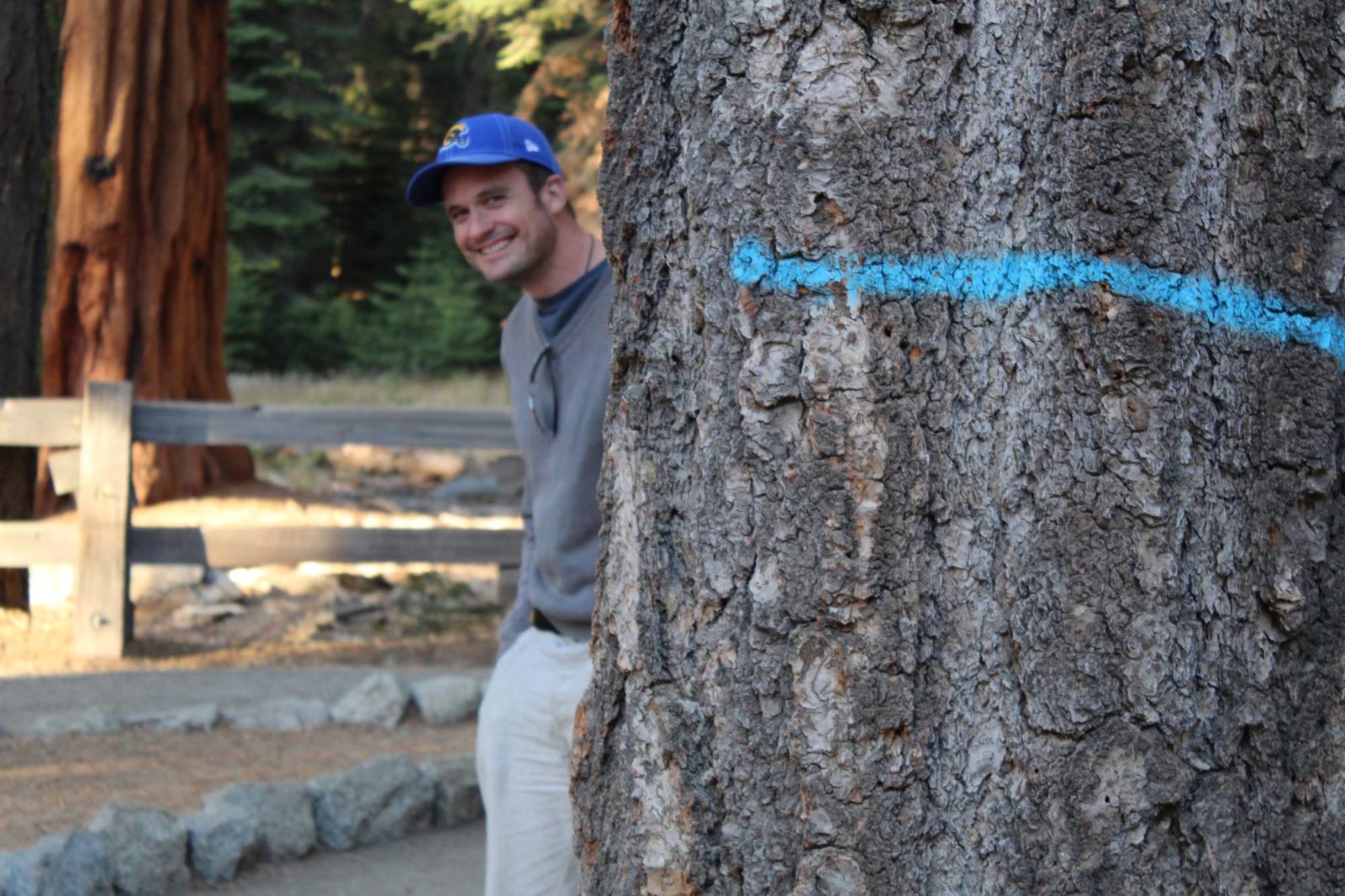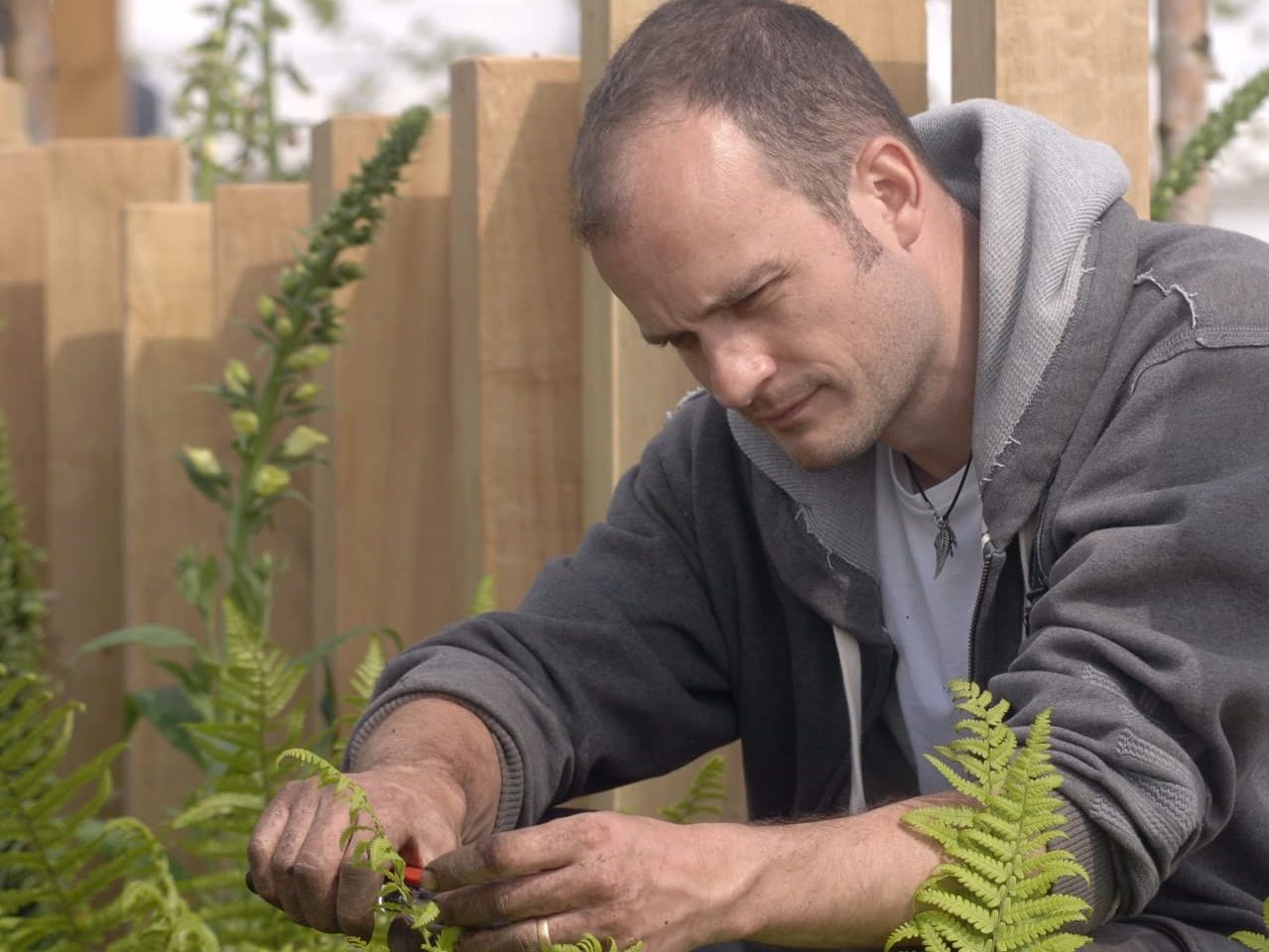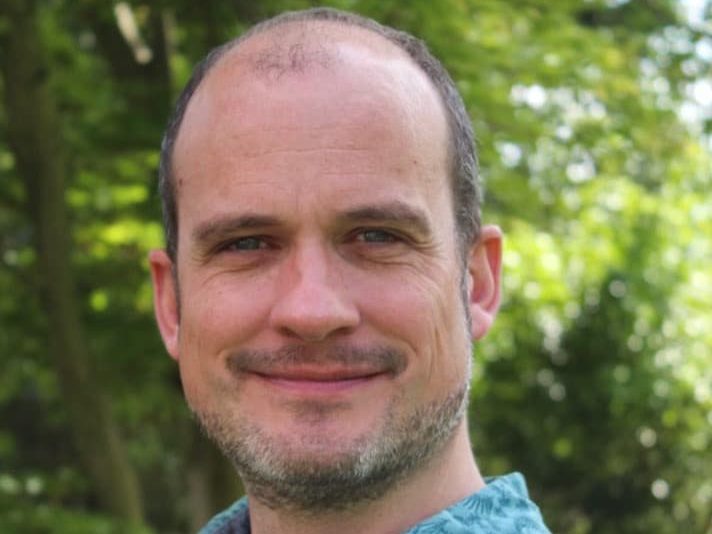Matthew Haddon: ‘Planting Is The Vital Ingredient To A Successful Garden Design’

Contributions From MATTHEW HADDON

Matthew Haddon is the Founder of Haddon Studio and a distinguished Garden Designer. He is a Registered Member of the Society of Garden Designers and a Member of the Chartered Institute of Horticulture. Matthew has earned multiple accolades including a Gold Award at the Harrogate Flower Show in 2014 and Silver-Gilt Medals at the RHS Flower Show at Tatton Park in 2018.
Matthew Haddon, the founder of Haddon Studio, stands out in the garden design world for his commitment to creating sustainable, ecologically-minded gardens.
Based in Yorkshire, his studio is renowned for blending contemporary and classic design elements to craft spaces where people and wildlife coexist harmoniously.
Matthew’s work emphasises biodiversity, sustainability and elegant simplicity.
In this interview he shares how RHS Flower Shows changed the trajectory of his career and some of the most valuable lessons his career in horticulture has taught him.
Please note that the imagery used in this article has been provided with permission by Matthew Haddon.
Can you share with us your journey in landscape design and what inspired you to start Haddon Studio?
“I grew up surrounded by keen gardeners, especially my dad and his parents, who founded their local gardening club in Leicestershire, which is still organised by my Dad’s twin brother,” begins Matt.
“Despite resisting the call of the soil for a good few years, a period as a Tree Surgeon and a series of professional courses led to a career change, and was the second-best decision I ever made (after proposing to my wife).
“I started working as a Garden Designer way back in 2010 and set up my own business: Matt Haddon Gardens. This was always a design studio, but for a while we undertook design and build as well – until a slipped disc and resultant surgery put paid to any manual labour!
“In 2022, after much thought, we rebranded to Haddon Studio. We had always believed in the importance of creating gardens for both people and nature and with Haddon Studio we made this an essential part of the company ethos – with the importance of biodiversity and increasing its presence at the core of our principles.
“We also wanted to show that we were bigger than just one person as although I remain fully involved with every design we do – from the concept to the fine detailing – our work is more than just that of one individual.”
Haddon Studio is known for creating sustainable, ecologically-considered gardens. Can you elaborate on why biodiversity and sustainability are central to your design philosophy?
“When it comes to being human, especially in the Western World, the act of living challenges how we can be sustainable – all life on the planet consumes resources but we tend to over-consume individually in a world of increasing population growth.
“A sustainable approach to this issue is not always to don a hair-shirt and withdraw human intervention, but it is instead about considering all of the choices we make, to balance these against the cost to the environment, and then to create places where people and wildlife can co-exist.

“In order to achieve biodiversity increases, gardens are a vital resource. For this reason [any garden must be] built to last – and that it is not part of the throw-away culture of fast fashions. This ensures that the input costs where choices are made that are perhaps less sustainable than others can be offset against the longevity of the garden.
“Designs that are contemporary but have a timelessness about them are those that last and those are the gardens that will be the most sustainable and the best habitat for wildlife over the long term.
“We create biodiverse and sustainable gardens because of the vast pleasure being close to nature provides for people – and that is both for our clients, whose lives are enhanced and improved, but also, selfishly – because creating space for nature, developing habitats and embedding that biodiversity gives us enormous pleasure as well!”
Winning awards at events like the Harrogate Flower Show and RHS Tatton Park must have been significant milestones. Can you talk about these experiences and how they have impacted your career?
“The RHS holds a privileged position in the eyes of the general public and, thanks to annual coverage of Chelsea Flower Show on the BBC, the notion of Garden Designers and show gardens is practically expected,” shares Matt.
“Winning awards at garden shows, whether they are national or local, is therefore a rite of passage for aspiring designers – especially when they are new to their career. Of course the ability to create a show garden demonstrates great skill, but is not always directly applicable to creating great gardens for clients.
“The experience of creating a show garden is unlike any other though and that is why so many designers go back year after year. I think show gardens help a designer build confidence in their abilities and that is where they have a positive career impact.
“However, although we have not designed a garden for a few years, I had the honour earlier this year of judging the show gardens at the Harrogate Spring Flower Show. This was a great experience and really did show the breadth of talent locally when it comes to designers and their skills.
“I like to think that we are giving a little back to the next cohort of designers, helping them to develop and hone their skills to create amazing gardens for their future clients.”
What are some common challenges clients come to you with, and how does Haddon Studio help in solving these issues?
“Each garden has its own unique challenges which stem from a client’s tastes and budget combined with their garden site, as well as the opportunities it presents and the limitations it may have,” he explains.
“Experience helps enormously to overcome issues which arise but the most common challenges tend to be those to do with people and with the site itself.
“When it comes to people, the ability to act as an impartial mediator when couples have different expectations for their garden is crucial – finding a mutually acceptable common ground without ignoring the wishes of either party means that everyone can fall in love with the final design.
“With regards to the gardens themselves, just recently our biggest challenge has been finding solutions for sloping gardens. Sloping gardens can be costly though, so need careful design, as retaining the soil usually involves building walls and this is not a cheap option – especially when clients would rather be spending money on plants!”
Where do you draw inspiration from when starting a new garden or landscape design project?
“I have read a lot of books and seen lots of people talk about creativity and I have to be honest, this is still a really difficult question to answer,” he says.
“The best way for inspiration to strike is when you are actually in the garden sketching and undertaking the site analysis. Being inspired by what is present, the landscape and the architecture of the home can be really powerful.
“I think this is a distillation of years of experience and serendipity on the site which come together when needed.

“Of course, sometimes inspiration can take longer to strike. In this case, photos, maps, sketches and plans are gathered and I will spend hours looking for inspiration and doodling over the top of survey plans.
“The hours spent are vital (both if inspiration is not forthcoming or if a design idea is being developed) but ironically, the flash of inspiration rarely happens during those hours spent at the desk.
“It invariably strikes later that day whilst I’m walking the dog through the woods – so when working on a new project, I try to remember to take a pad and pencil with me wherever I go!”
What are the most valuable lessons you’ve learned in garden and landscape design?
“I think that good design sets the stage for the whole garden to shine. Whenever I go to visit a garden being built, everything needs to work before the plants and turf are installed because if that is the case then it can only get better.
“Similarly, planting is the vital ingredient to a successful garden design as it can take a good garden and make it great. Equally, it can be used to great effect in any garden by hiding what needs to be hidden and drawing the eye to where you want to look.
“From a practical perspective though, it will almost always cost more than people think to create an amazing garden – from quality materials that will last, to the cost of the plants themselves if you are not dividing and sowing from seed, to the professional landscapers who install it and should be paid a fair wage.
“That does not mean you have to spend a fortune to create an amazing garden, but it does mean that you need to be clear about what you want and how you can achieve it, and that is where a Garden Designer can add value.”
Can you share any upcoming projects or initiatives at Haddon Studio that we should look out for?
“We are always learning and developing, which is one of the great things about Garden Design,” says Matt.
“One initiative that is under its final development stage is a formalisation of our gold standard biodiversity design process, especially looking at ways to demonstrate clearly what we want to achieve, how we intend to achieve it and then measuring a gain in biodiversity to show what we are doing is working.
“I have also been working with passive acoustic monitoring techniques, using a recorder installed in the garden at intervals throughout the design process and beyond and using bird song as a way of demonstrating this. Field tests are ongoing but we hope to get it rolling out very soon.
“On the garden front, we have plenty to keep us busy over the winter with another interesting sloping garden, but we will continue to seek out exciting projects that allow us to deliver great designs; to showcase our creativity alongside increasing biodiversity at the same time.”

